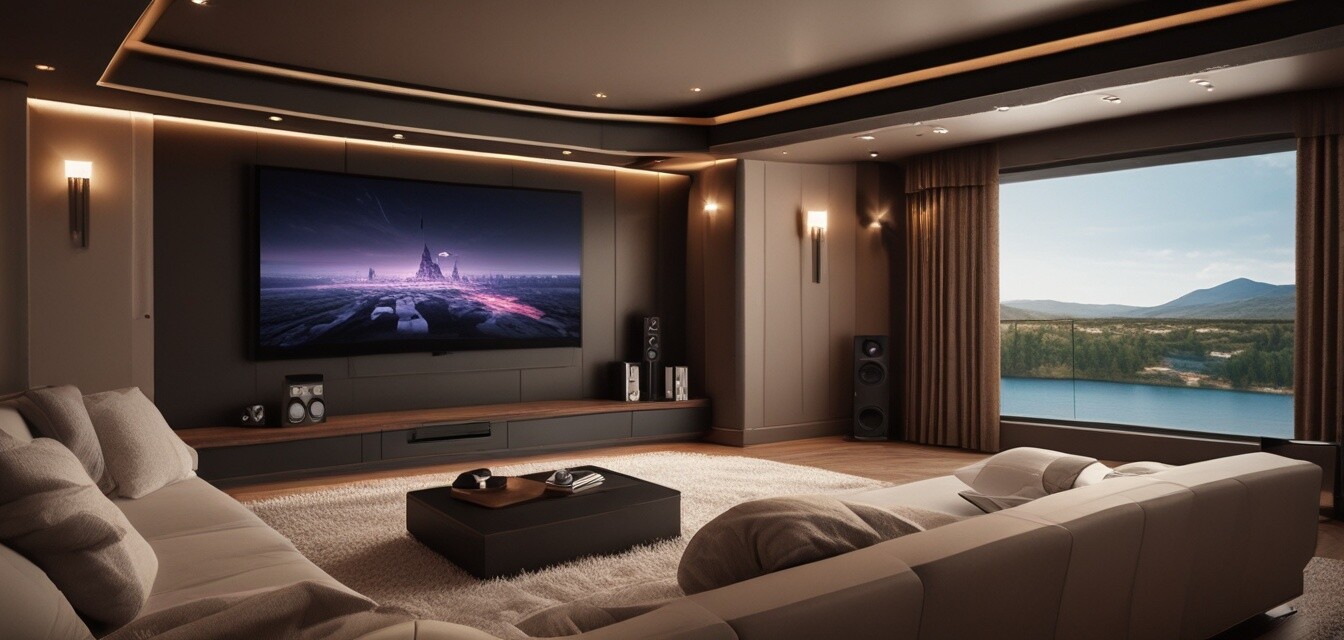
Essential Tips for Designing a Multi-Purpose Home Theater
- Consider acoustic treatments for improved sound quality.
- Choose versatile seating arrangements that accommodate different activities.
- Integrate smart home technology for seamless control.
- Design flexible lighting options for various moods.
- Plan for multiple media sources to enhance functionality.
Creating a multi-purpose home theater that caters to various entertainment needs can transform your living space into a versatile area for family fun, relaxation, and leisure. This guide will provide you with essential tips to design an ideal home theater that functions seamlessly as a multi-purpose entertainment spot.
Understanding Your Space and Needs
Before diving into the design, it’s crucial to assess the available space in your home. Understanding how you plan to use the home theater will guide your decisions. Here are some questions to consider:
- What activities will take place in the theater? (e.g., watching movies, gaming, hosting parties)
- How many people do you want to accommodate?
- What equipment do you already own or plan to purchase?
Acoustic Treatments
Good sound quality is vital for any home theater experience. Here are some acoustic treatment options:
| Treatment Type | Description |
|---|---|
| Sound Absorbing Panels | Control echo and reduce noise levels. |
| Bass Traps | Help manage low-frequency sounds common in home theaters. |
| Diffusers | Scatter sound waves to enhance audio quality. |
Seating Arrangements
Your seating choices can greatly impact the versatility of your space. Consider the following seating options:
Tips for Seating
- Choose modular furniture that can be reconfigured.
- Incorporate recliners or sofas with removable covers for easy maintenance.
- Consider a tiered seating arrangement for better visibility.
Smart Home Integration
Incorporating smart home technology can streamline the functionality of your home theater. Here’s how:
- Install a universal remote to control all devices.
- Use smart lighting to create different moods.
- Integrate sound systems that can be controlled via a mobile app.
Flexible Lighting Solutions
Lighting enhances the viewing experience and can set the mood for various uses. Consider these tips:
- Use dimmable lights for movie viewing.
- Incorporate LED strip lighting around the screen for ambiance.
- Add blackout curtains to control natural light during the day.
Media Sources and Entertainment Systems
To maximize the functionality of your home theater, plan for multiple media sources:
| Media Source | Pros | Cons |
|---|---|---|
| Streaming Services | Wide selection of content | Requires stable internet connection |
| Physical Media | High-quality audio and video | Requires appropriate hardware |
| Gaming Consoles | Interactive entertainment | Can be expensive |
Key Features to Include
To create the perfect home theater environment, be sure to include these key features:
- A high-quality projector or large flat-screen TV
- Surround sound audio system
- Comfortable seating
- Ample storage for media and equipment
- Good ventilation and climate control
Final Thoughts
Designing a multi-purpose home theater is an exciting project that can elevate your home entertainment experience. With the right planning, equipment, and design choices, you can create an adaptable space that meets your lifestyle needs. For more information on setup tips, check out our Setup Tips category.
Pros
- Versatile space for various activities
- Enhanced sound and viewing experience
- Increased home value
Cons
- Initial setup costs can be high
- Requires ongoing maintenance
- Space limitations in smaller homes
Additional Resources
For further guidance, make sure to explore our other resources on:
- Acoustic Treatments & Accessories
- Speakers & Sound Systems
- Home Theater Receivers
- Buying Guides
- News and Trends

